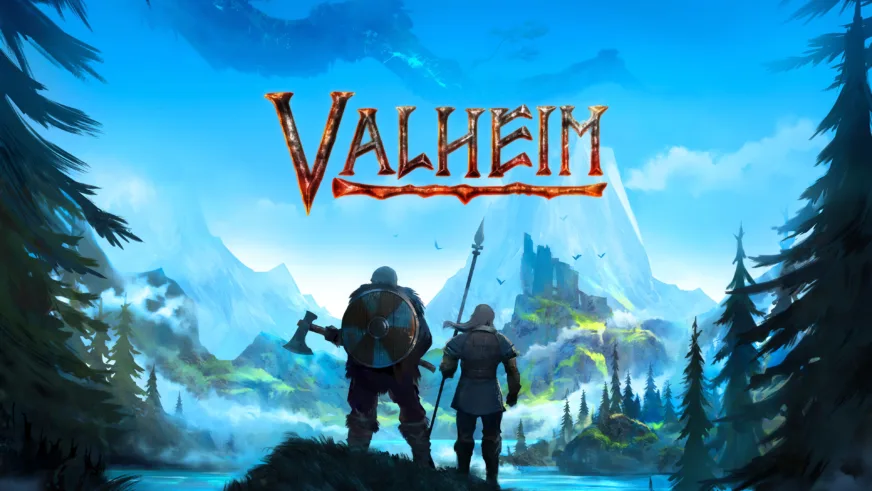After clocking 30 hours in, I decided to write a small (hehe) review of the game. And, along the way, figure out how a previously unknown studio of 5 people managed to release such an exciting product that conquered the Steam charts.
Iron Gate Studios and its 5 heroes
A little background for people who, like me, until recently did not understand what was happening at all.
So, on February 2, 2021, a small Swedish studio Iron Gate released a Viking simulator in Steam Early Access. At the time of release, the studio consisted of as many as five employees and, apart from Valheim, had no other projects in its portfolio. I, as a person who is sceptical about games from the Early Access category, did not dare to give as much as $10 to an unknown developer at first.

Meanwhile, reviews of similarities to Minecraft, Terraria and Stardew Valley pushed me even more – no matter how hard I tried, none of the three mentioned games worked for me. And I don’t like pixel graphics either. In addition, in the first week of release, there was news of a bug with saving progress , which could permanently damage the files and force you to start the game from scratch.
Well, I’ll wait until the sale – I thought, and forgot about the game, throwing it in the wish list along the way. But that was not the case: the game continued to gain popularity and the news of selling one, two, and now three million copies forced me to reconsider.

For how long?
Apparently, the developers themselves did not expect an avalanche of success – in one of the earlier interviews with PC Gamer, one of the developers admitted:
We felt that (Valheim) would sell well – at least recoup our costs. But we did not expect to reach a million, and now two, sold copies.
Henrik Tornqvist, Developer and co-founder of Iron Gate Studios
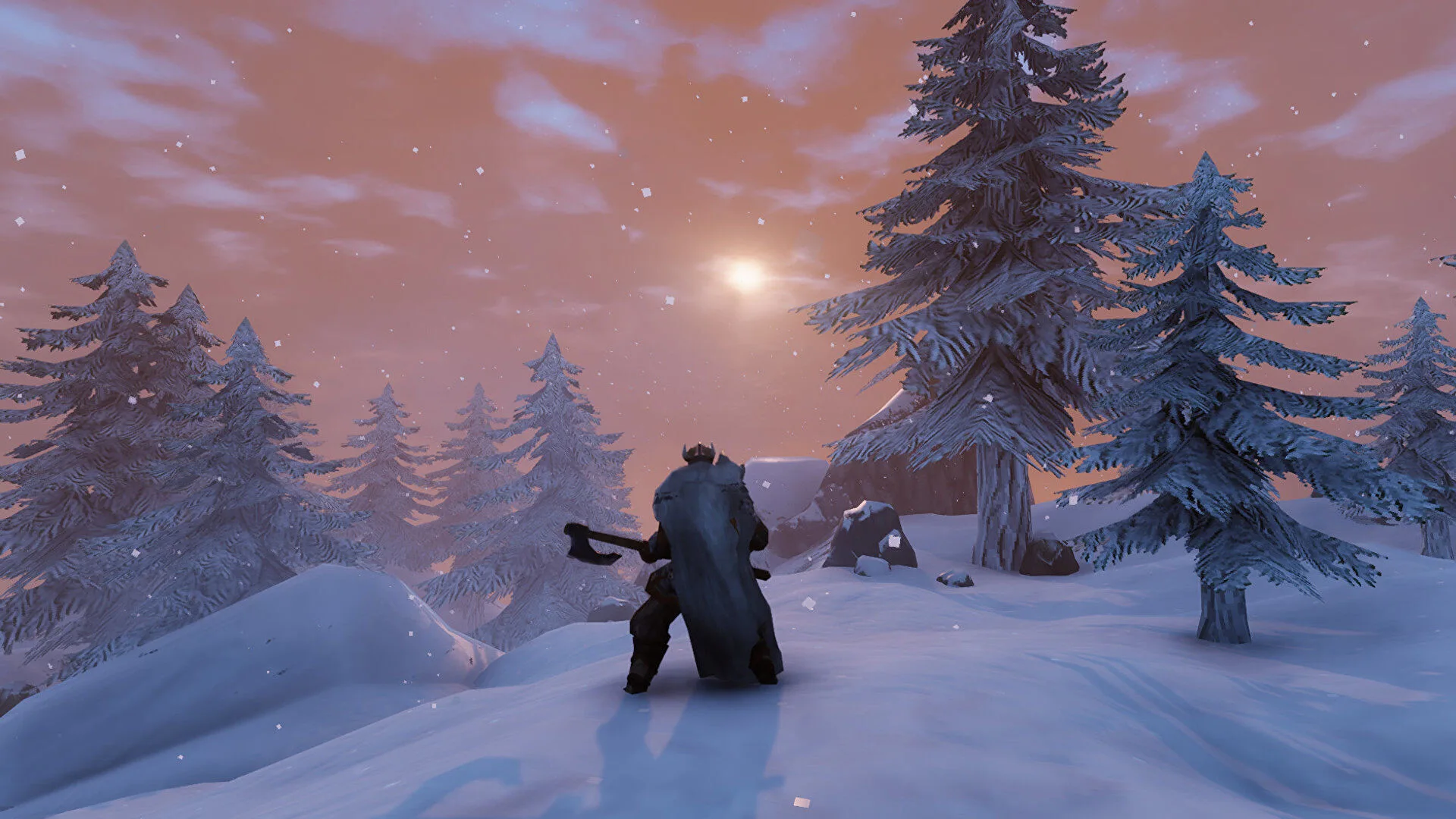
Henrik was supported by a teammate:
We were quite optimistic – or should I say extremely optimistic – about the number of copies of the game sold. But the situation now exceeds our wildest dreams.
…
At one point, we jokingly discussed: if someone then said that the game would sell two million copies in just 2 weeks, then we would just laugh, telling the person that he was most likely just a troll.
Sebastian Ericsson, Coffee Stain Publishing, Valheim publisher
No less shocking were the works of the players, which, as Sebastian admitted, he looked at with pleasure on the /r/valheim subreddit.
Zelda and Skyrim as inspirations
What exactly became the subject of imitation for developers, Henryk said in another interview. If you thought that they were looking at other similar projects – this is not entirely true:
We wanted to experience more of an old-school, single-player adventure experience: something similar to early versions of (The Legends of) Zelda. When you get new equipment for defeating bosses. And we would like, or we hoped, that it would play well with other survival aspects of Valheim.
And yes, we seem to have succeeded.
Henrik Tornqvist, Developer and co-founder of Iron Gate Studios
Bosses in Valheim control the progress and availability of content. For example, defeating the first of them allows you to get special deer antlers to craft a better pickaxe. It, in turn, allows you to extract not only stone but also tin with copper.

The second reason for the success of Valheim is a slightly different survival model. Not the one that we, the players, had time to get used to. Firstly, repairing anything in the game does not consume resources, from the word at all. Secondly, any building or constructed element can be destroyed and all resources can be returned. This is not quite typical for games of this genre.
Richard (CEO of Iron Gate Studios) pretty quickly came to the conclusion that an open world simulator that simulates things just for the sake of simulating looks rather unnecessary.
Henrik Tornqvist, Developer and co-founder of Iron Gate Studios
Therefore, when he started developing the game, the focus was on gameplay, and the simulation itself was more about improving the gaming experience than making it more difficult.
For example, players who had to interrupt the construction of some kind of fortification or fort in order not to starve to death were more likely to suffer from survival elements than enjoy them. In Valheim, food and drink also play an important role, but the character cannot die of hunger or thirst.
Tornqvist later added that the simulation should not interfere with the gaming experience. “Food should help the player complete more difficult tasks, and not kill him if he did not eat,” he stressed.
My Viking Journey
After giving away $10 of hard-earned money and breaking my personal vow not to play early-access games, I added Valheim to my library and headed out to make some tea while the game was downloading. Wait, what is this? Size 1 (ONE!?) GB? But how?
The game really takes only 1 GB, and the secret lies in the use of the Unity engine, which was originally sharpened for mobile platforms. Well, the graphics are not the main thing for me, I thought and launched the game.
As usual, we start with the character creation screen. Yes, this is not Ubisoft with dozens of options for skin, eyes, lips, tattoos and many other options. But there are still several types of hairstyles, beards and skin colours. Looking ahead, almost all appearance modifications will be hidden behind armour, but – since the hero loses equipment upon death – you will have enough to see your (bare-ass) original form.

After a short introductory video, our protege is thrown onto a mysterious island in a circle of mystical stones. A black crow that appears out of nowhere briefly explains the main gameplay elements and appears from time to time later to explain the rest. Yes, this is not Gothic from Piranha Bytes, where you need to guess everything yourself, but don’t expect a full-fledged tutorial with navigation arrows and paragraphs of text. Which, for me personally, is a huge plus.
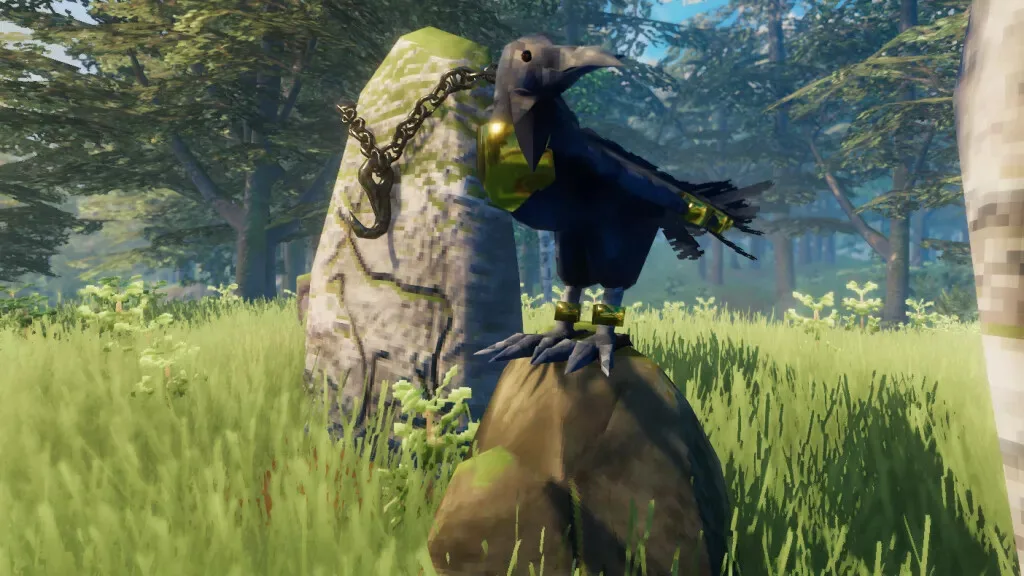
The first materials had to be mined with bare hands, but the main tool appears rather quickly. Skills are pumped during their use (hello Skyrim!) – cutting down trees means you increase your skill and, over time, it takes less time.
The first surprise for me was the quite decent physics of the game and the accompanying dangers. A crookedly felled tree may well fall on your head and, if not kill, then seriously spoil your health. The sound of an axe attracts local evil spirits and chopping something at night is not the best idea. As, however, it is located in an open area.
Therefore, the first task was to build a shelter and search for food. As I wrote above, the food here is rather a bonus – it significantly increases the amount of health, energy, or both. You need to constantly collect mushrooms and plants along the way, but this process does not burden you at all.
A small (barn) house concocted in a quick hand does not allow you to immediately lie down and rest. The fire built inside the four walls quickly fills the room with smoke and our hero begins to suffocate! Okay, clearing my throat, redoing the roof to get fresh air flowing, but that wasn’t the case. At night, the enemies are especially active and are not averse to “eating” our main character. I have to speed up and, having fought off a small group of evil spirits, I finish the house in order to close myself inside and, finally, have a good sleep.
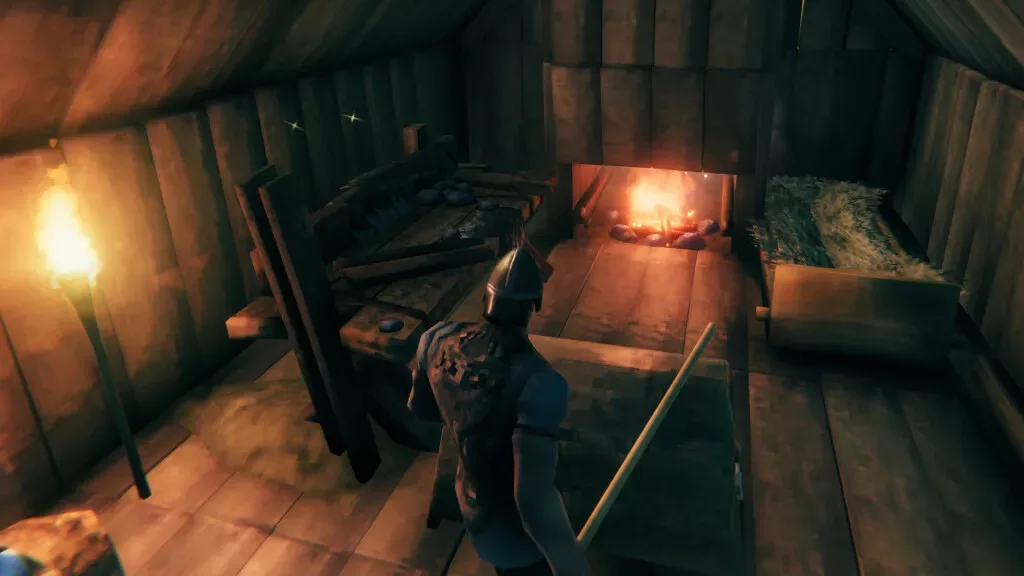
The first night I remember for a long time: the sounds of monsters behind the walls, the sudden storm that broke out and the glare of lightning impressed me a lot. Playing with headphones has its charms, and the immersion in the world of Valheim is stronger than I originally imagined. Moreover, you stop noticing the pixelated graphics somewhere in the second or third hour of the game. You only remember it when you read the comments of people who, apparently, “played” Valheim from pictures on the Internet.
When morning came and the sun was shining nicely on the street, I went to explore the surroundings. The game provides several unique locations (biomes), each of which has its own set of resources, monsters and other features. For example, the initial one – lawns – has ordinary trees and many wild boars that will happily run after you if you break their consumption of raspberries and mushrooms. There is also a dark forest, swamps, steppes and even endless snowy expanses, where you should not meddle without special equipment – the hero will freeze (and die).
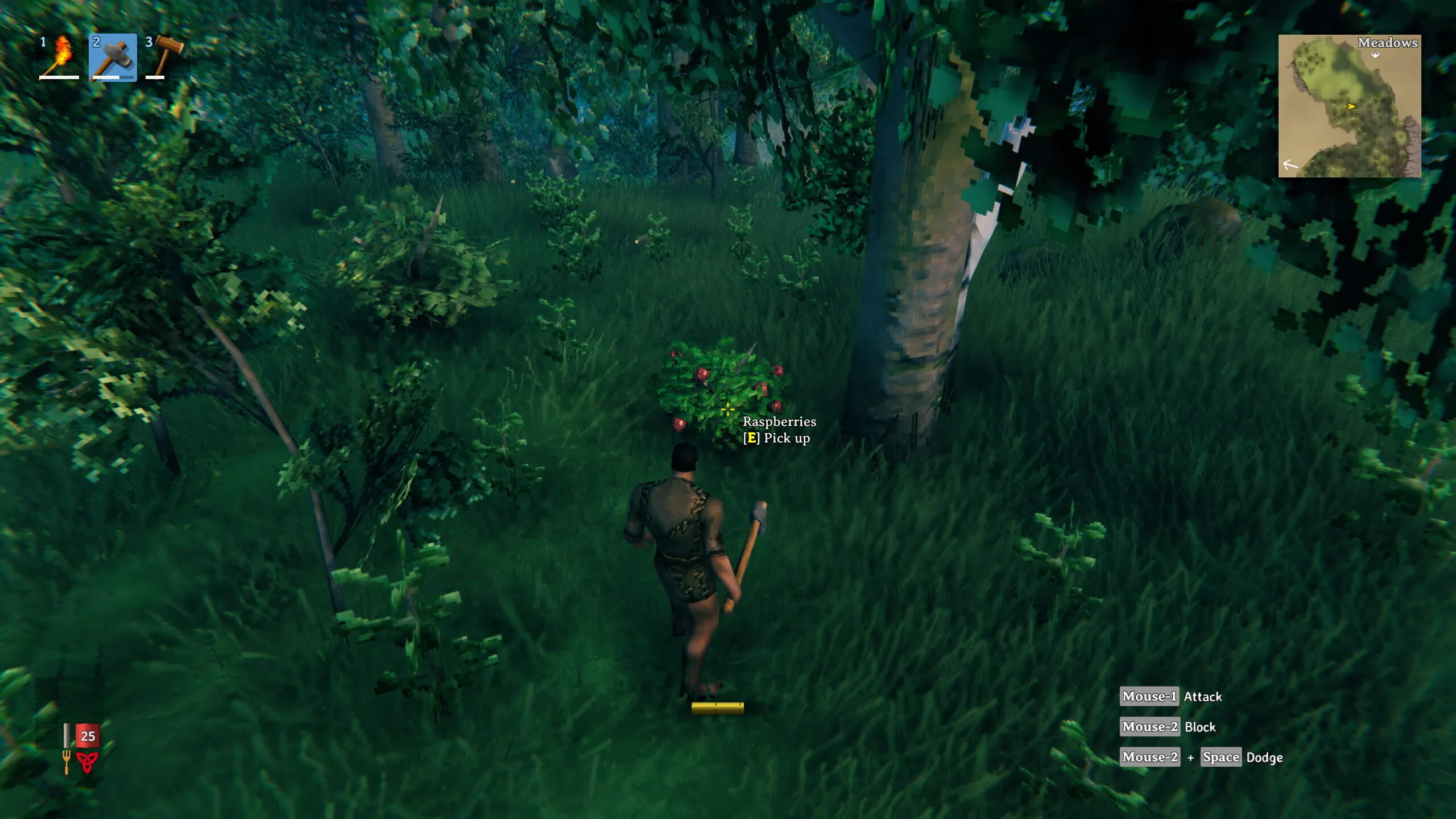
The locations are separated by small gorges with minerals, rivers or the ocean, which can be crossed on a raft. Nothing stops the player from going anywhere, but he is unlikely to be able to do anything in a more difficult location – he needs the appropriate tools.
Building, crafting, and equipment
Despite, so far, a small variety of subjects, there is still something to do at first. All initially necessary items are collected from improvised means, and then gradually improved, opening up new possibilities.
There are several clothing options to choose from (starting from some rags, leather armour, then copper and so on), different types of weapons (from a bow to a halberd) and auxiliary items that open later (food and elixirs).
The situation is similar with construction – you can build a house, make a roof and decorate it with various decorations or trophies of defeated animals (and not only animals). By the way, the scenery here is not just for the picture – they increase comfort and the hero stores much more energy while resting at night.

A separate item is working near the house – in addition to planting trees, there are also various plants, breeding wild animals, bees and honey, and so on. In general, all housework takes a lot of time – you need to cook food, fix the fence after a night attack, feed the wild boars, and throw firewood into the stove in order to add the resulting coal to the smelter.

The smelting of ore and other minerals is the second important aspect for surviving and moving into more dangerous areas. There are several types of ores that can be combined and used to craft better armour and weapons.

Do not forget about the preparation of food and drinks. If at first you basically survive on a couple of pieces of fried meat, then you need to brew potions to protect yourself from the cold and/or poisoning – otherwise, the chances of surviving in dangerous areas tend to zero.
In a barrel of honey, there was not even a fly in the ointment. If any building can be destroyed, having received all the spent materials back, then it will not work out with things – once created leather armour is still gathering dust in my chest, since it cannot be dismantled. But they promised to fix it in the near future.
World exploration, combat mechanics, bosses
Being in the first location, surrounded by tall trees and deep gorges, it is difficult to imagine the scale of the whole world. Complicating the task is the ocean, which separates the islands and requires some effort for further research.

In general, the world is quite huge and even now, being in early access, you can explore it for dozens of hours in a row. In addition to the unique biomes mentioned above with different resources and dangers, there are also dungeons in the game. Although they are not very diverse, clearing the first gives a lot of emotions. Wow, stumbled across a huge <spoiler-free> cave entrance that killed my viking in one hit!
Retrieving lost items and equipment generates some more adrenaline, but by no means annoying. All thanks to special mechanics: dying a second time, in the same place, is unlikely to succeed. But on the way to the scene – no problem! After all, even a small wild boar, which you can easily deal with in armour, can be too tough for a hero without the slightest protection (and food).
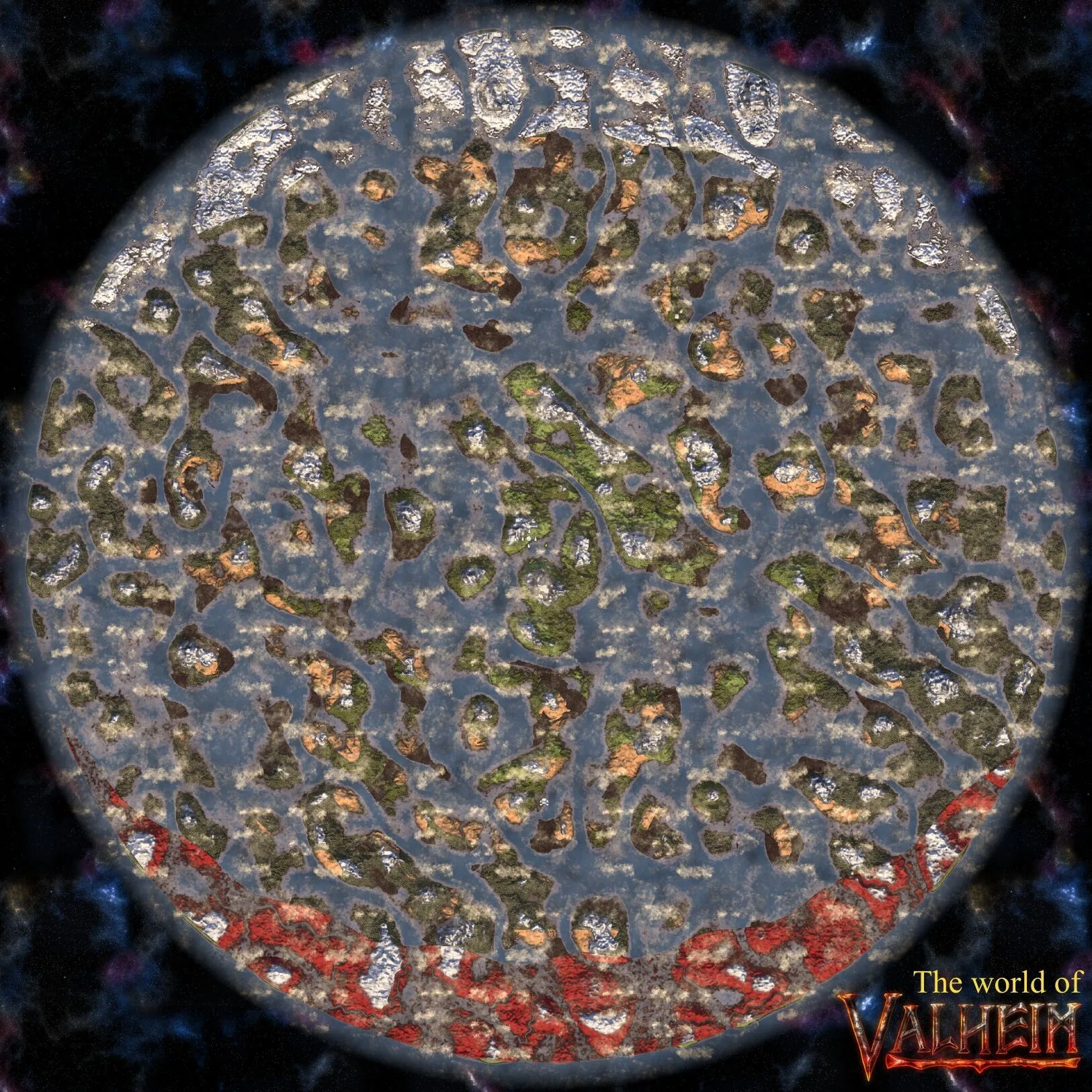
Again, a well-chosen soundtrack plays a significant role. These are the sounds of the cave itself, the cry of monsters behind the walls and other incomprehensible vibrations. These are the waves of the ocean, the sounds of thunder and rain, as well as various evil spirits at night. At the same time, just walking through the forest, building a house or collecting resources is a very pleasant and, most importantly, exciting pastime – you never know what awaits behind that tree!
The last item, which I will mention briefly, so as not to spoil your personal impressions, is the bosses of each biome. The difficulty of the next one grows exponentially and if the first one is even more or less tolerable, the second one will make you roll on the ground in the best traditions of Dark Souls 🙂
Despite this, it is possible and necessary to kill them for further development, although there is no particular urgency in this. And in the future, the developers promised to increase the number of biomes and bosses, as well as add mini-bosses.
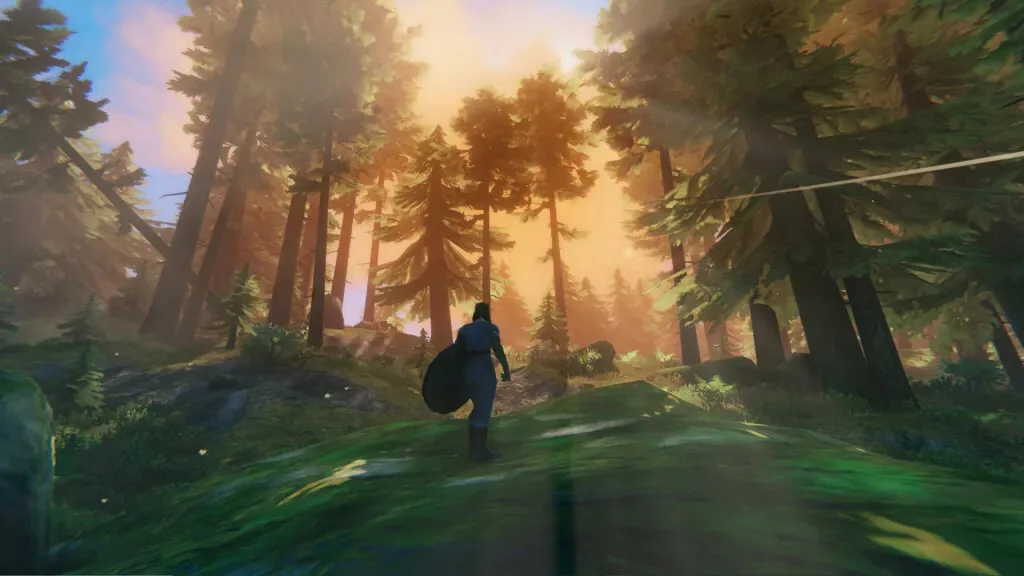
Lastly, I will write about one drawback. As you may have guessed, I did not mention only the combat mechanics, because. For me, it seemed too primitive. Yes, there are many types of weapons, including bows with different types of arrows. Enemy blows can be parried with a sword; there are shields – you can also block. The type of weapon also matters – it is better to beat skeletons with a club, and not try to cut with a sword; some enemies burn perfectly, others, on the contrary, do not burn at all.
But that’s all! There is no magic, I did not find spell scrolls, and there are also no hints of a skill tree or talent points. Maybe my expectations are too high, but if at first, it’s fun and varied to beat different living creatures, then for the thousandth time running after a wild boar or a deer gets a little boring – I would like to set it on fire with lightning or even subdue the skeleton and send it on the attack. Alas, all this is missing – as well as it is unclear whether it will be in the future – which makes the “combat” a bit boring after 12 hours of play.
(Almost obligatory?) co-op
You can play Valheim alone, or you can play together – a maximum of 10 players in one world. The developer himself on the game page on Steam advises playing in a group with 3-5 (vikings) people, for the best experience of the game.
Because I almost immediately started playing together with two friends, the problems of solo passage were not clear to me. But for the sake of this (small) overview, I spent some time alone trying to complete normal tasks without the support of friends.
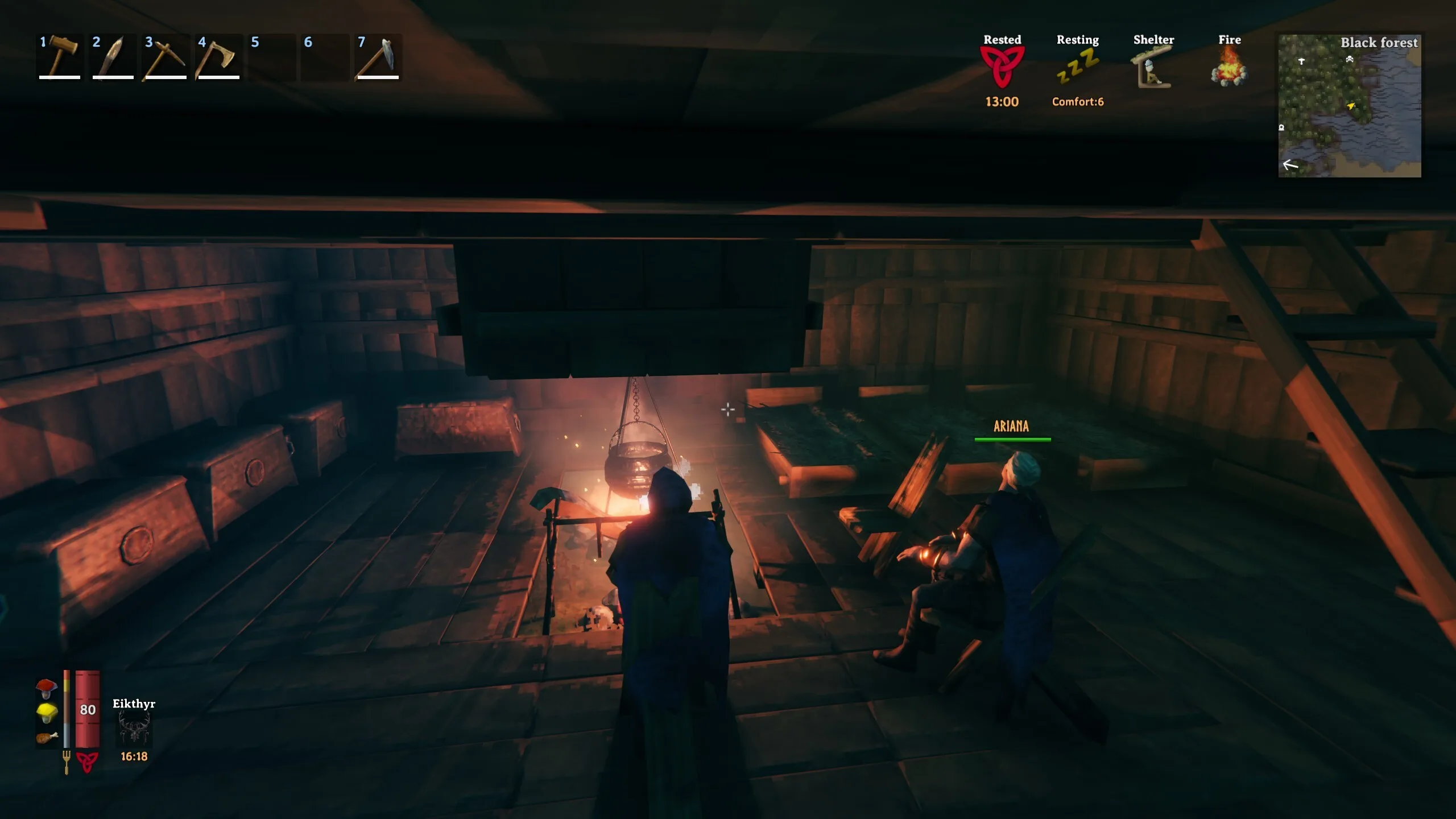
What can I say, it’s a completely different game. If you can quickly distribute responsibilities in a group: someone cuts wood, another mines ore, and I am engaged in its remelting, simultaneously preparing domestic animals, then all this does not take so much time. Yes, and talking during this activity is very relaxing!
The same applies to all other aspects of the game – killing bosses is much easier with a tank and two archers, you can explore dungeons three times faster, and sailing through the sea for long distances is much more fun.
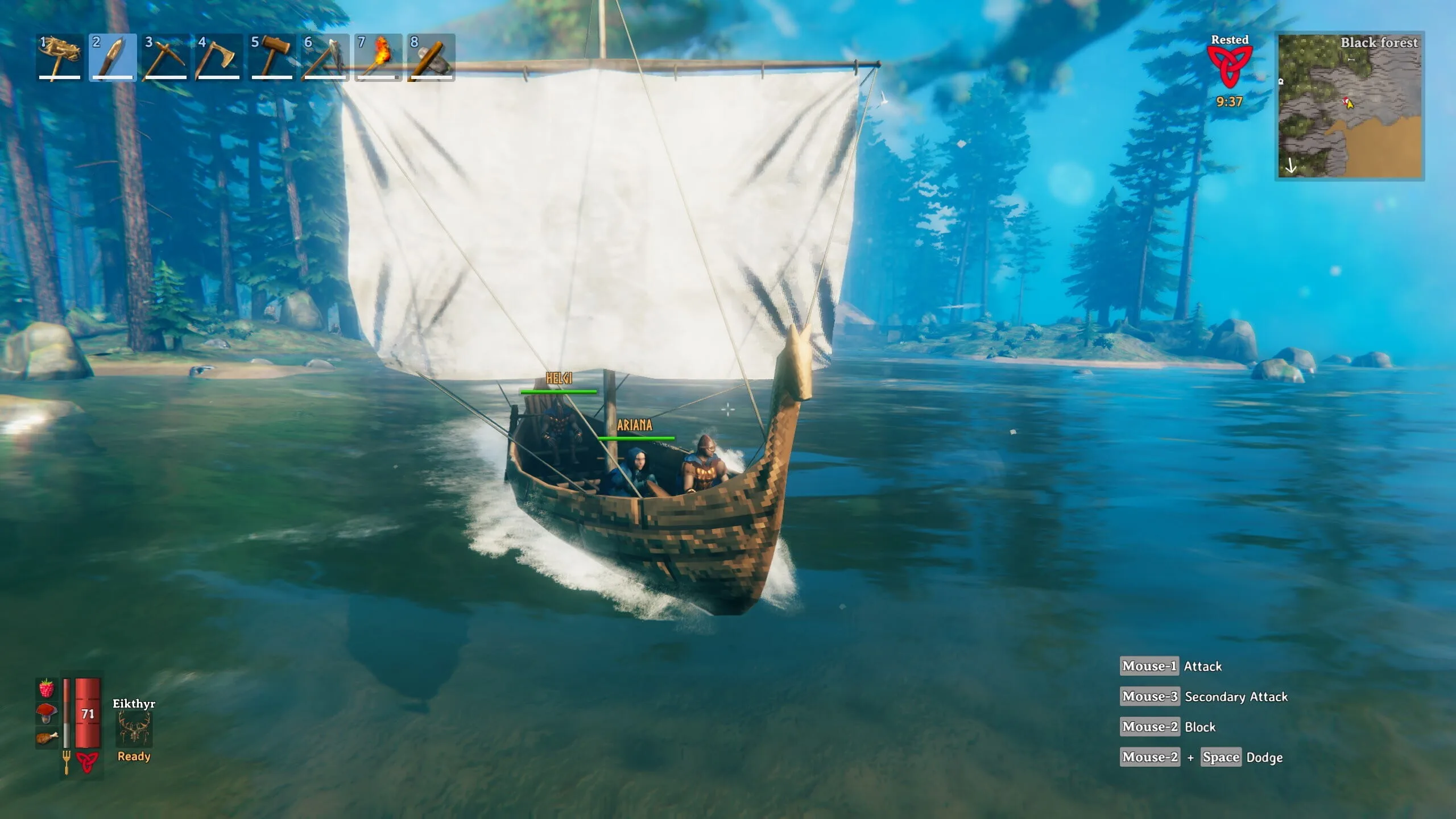
But left alone in the game, I was not very happy. Doing homework is another punishment! Killing a serious opponent is much more difficult – because now I have to both tank and deal damage. And sailing from one island to another is just torture: when nothing happens on the screen for more than 10 minutes, it’s not fun at all.
Maybe it seemed to me, but the difficulty scaling in the game is not provided. Those. the same skeleton has the same amount of life – that when playing alone, that three of us. It’s good that mining ore by hitting the same area with picks is still faster, but this does not solve the problem of the low difficulty of the group game.
These points make the co-op mode a big plus and minus of Valheim at the same time. On the one hand, playing by yourself is more difficult and, for some people, it may seem more interesting. On the other hand, playing in a company is much more fun, but the complexity of the game suffers from this.
Bugs, optimization and performance
Because the game is in early access, I was mentally prepared for a huge number of bugs and a minimum frame rate. But what can we say about indie studios, if even huge corporations release finished products half-baked?
I’ll tell you in order, starting with the bugs. Surprisingly, in more than 30 hours I caught as many as 2 (two) things: the deer teleported to the top of the tree and the monster became invulnerable, chasing me, but not causing damage. The first was solved by a cut down tree, the second by restarting the game. Yes, there were probably others in the first week, but the most serious one – with saving the game – has long been fixed.

At the expense of optimization and performance – not everything is so rosy here. On my rather powerful hardware (i7-6700k, 32 GB, Vega 56), the game does not produce stable 60 frames at 1440p resolution and maximum settings. They add negative and some effects, such as a strange implementation of motion blur, and turning off which is much more pleasant to play. This does not affect the immersion in the game, but I would also like to see more than 60 fps (not to mention all 144!)
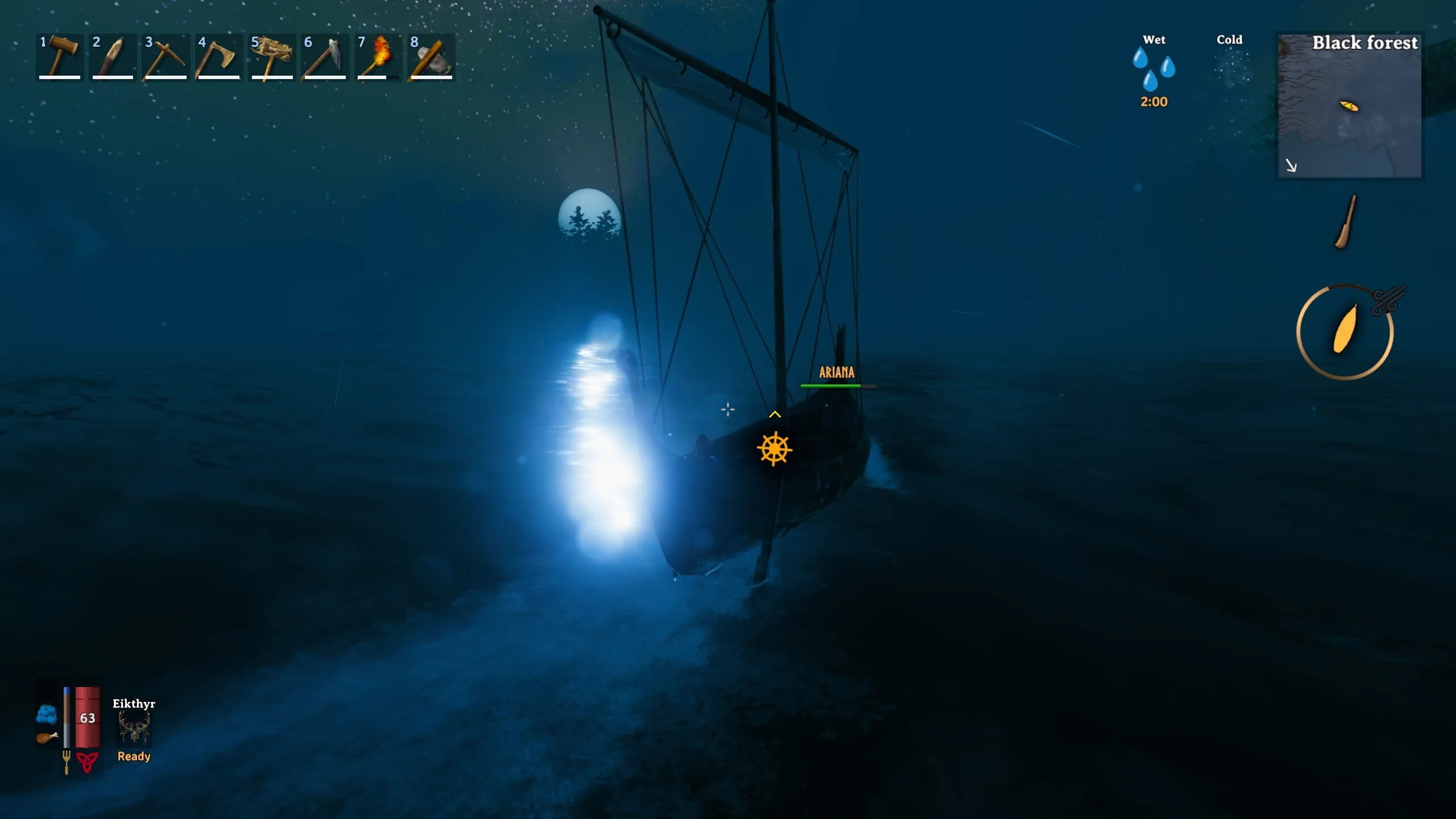
I hope that in the next patches the developers will pay a little attention to performance and rework a couple of effects that make the game worse.
UPD: From the comments it became known that some players are experiencing desync bugs due to the use of p2p connections in Valheim (instead of dedicated servers) during co-op play. This issue is currently at the top of the developer’s bug tracker, which can be viewed here.
What is the result?
After playing a little over 30 hours, I still want to see what happens next. In terms of crafting and building, I have already opened most of the available content, there are a couple of unseen biomes and a few bosses that I am in no hurry to find.
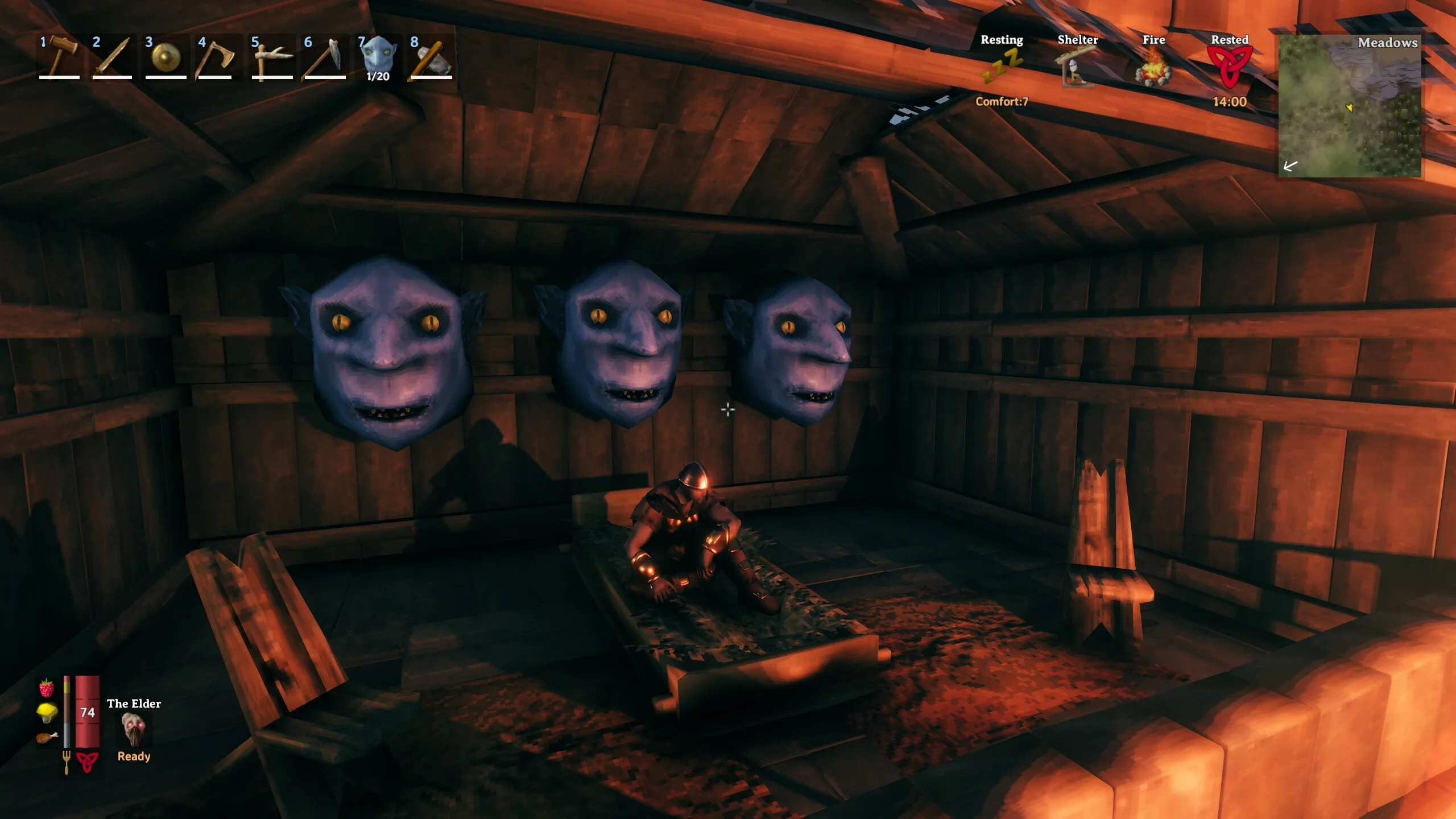
Given the price and quality of the release, I definitely recommend trying the game. Even for those who are not fans of pixel art and/or minecraft survival and similar genres. Even despite, as it turned out later, not the widest variety of content available, there is something to do in the game. And you can do more than one hour. As a result – personally from myself – I recommend the game.

The rest of the players reacted, in general, quite positively. At the time of writing this review, Valheim has a 96% positive rating with just under 90k reviews – a rare occurrence even on the scale of Steam with thousands, if not tens of thousands, of similar games.
The developers are also not completely drunk on the dizzying success. Having actively patched the main bugs, they undertook to fix smaller errors. At the same time, a roadmap for future content was announced – they promise new bosses, construction improvements, and new marine content.
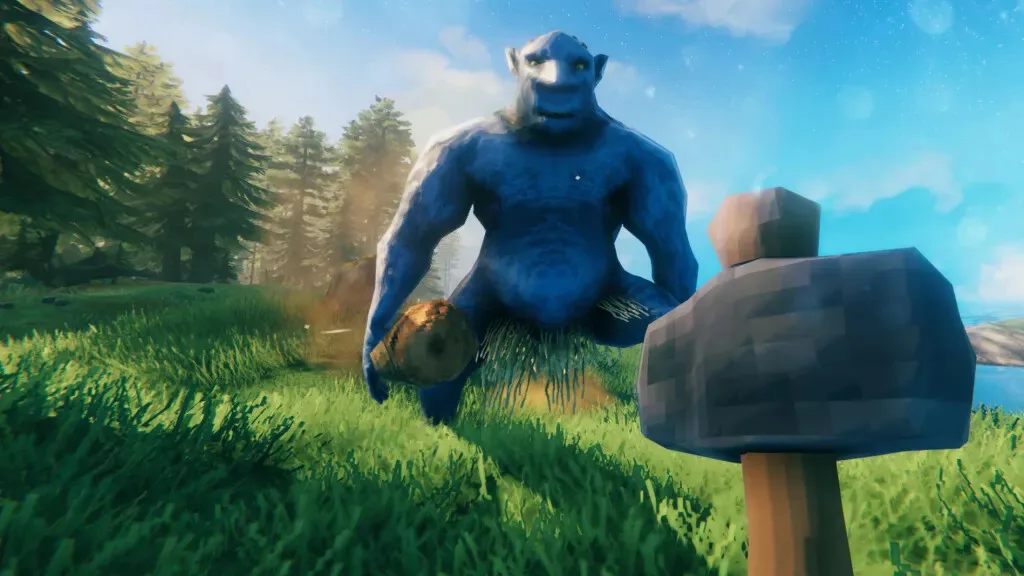
I was surprised only by the reaction to third-party modifications – according to the company, they do not plan to support custom extensions. Although this did not stop the community and the first mods are already available for the game. I think that Valheim provides an almost unlimited field for creativity, and players can stretch the life of the project for a fairly long period.
Thanks for reading and wish you happy travels in the Viking world!
